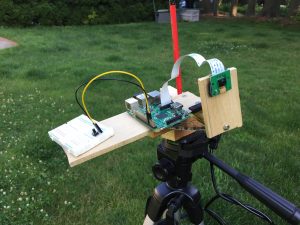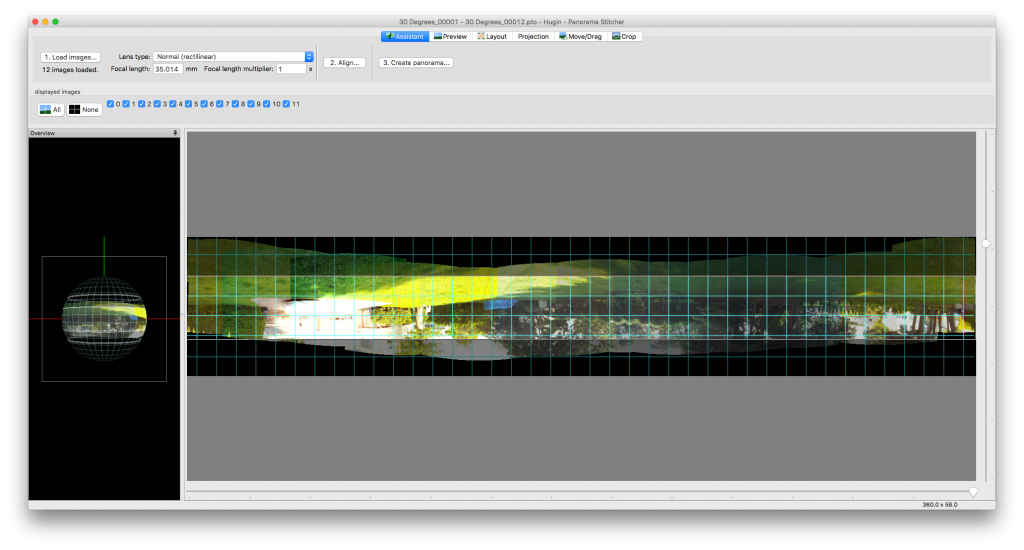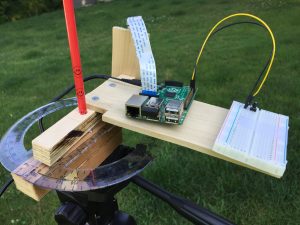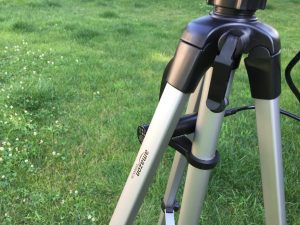Now that I finally have a working camera, it was time to perform some tests! I connected the Pi to an Anker portable battery and booted it while still connected to the keyboard, mouse and screen. I started my swtich.py program and pushed the button to verify that it was working. Once I was satisfied, I disconnected the screen and keyboard and assembled the tripod.
 I taped the breadboard to keep it from slipping off the platform.The cantilevered nature of the platform required a bit of support on the end from my hand to keep it level.
I taped the breadboard to keep it from slipping off the platform.The cantilevered nature of the platform required a bit of support on the end from my hand to keep it level.
I originally tucked the battery in the tripod handle, but then held it to avoid the wires getting caught as I rotated the camera.
I am really pleased with how well this simple setup worked. The assembly was easy enough that I could repeat when more testing is needed, and it is fairly portable. While outside, I took several rounds (pun intended) of photos at different angular increments.
The first round was a photo approximately every 70°. As the protractors only measure in 5° increments, I had to approximate this to the best of my ability.
Round 2: Every 30°
Round 3: Every 60°
Results
It turns out that the camera’s viewing angle is not actually 72° as I had been led to believe, but actually closer to 54°. I blame the online discussion forums for their misinformation. As a result, only round 2 of testing produced any stitchable results. I probably shouldn’t have done my first round of testing at around 5PM with sharp shadows and light differences across my shadowy lawn. However, although imperfect, this is honestly a more accurate representation of what the cameras will need to deal with when recording time-lapses. Importing the pictures is still a tiny bit of a hassle – I need to connect the micro SD card to my Ubuntu VM, and then copy the files to Mac, rename them, and import them into Hugin. While this process is a few more steps than I’d like, its fast enough to not be a problem.

Due to the nature of the angle tester assembly, the camera was mounted upside down, which makes no difference to Hugin. This wonderful software stitched the 12 photos together in a few seconds and presented me with a panoramic TIFF. Unsatisfied with its default cropping, I edited the panorama and then reexported it. Due to the strictly horizontal nature of this test, the panorama was exported as a cylindrical projection instead of equilrectangular.
After the image was flipped, I compressed it from 24MB to <3MB so that it could be uploaded here. You can see the wide range of light posed a minor challenge for the camera, and my house is completely washed out. While light extremes may cause picture issues, I believe this setup will be sufficient for most conditions.


